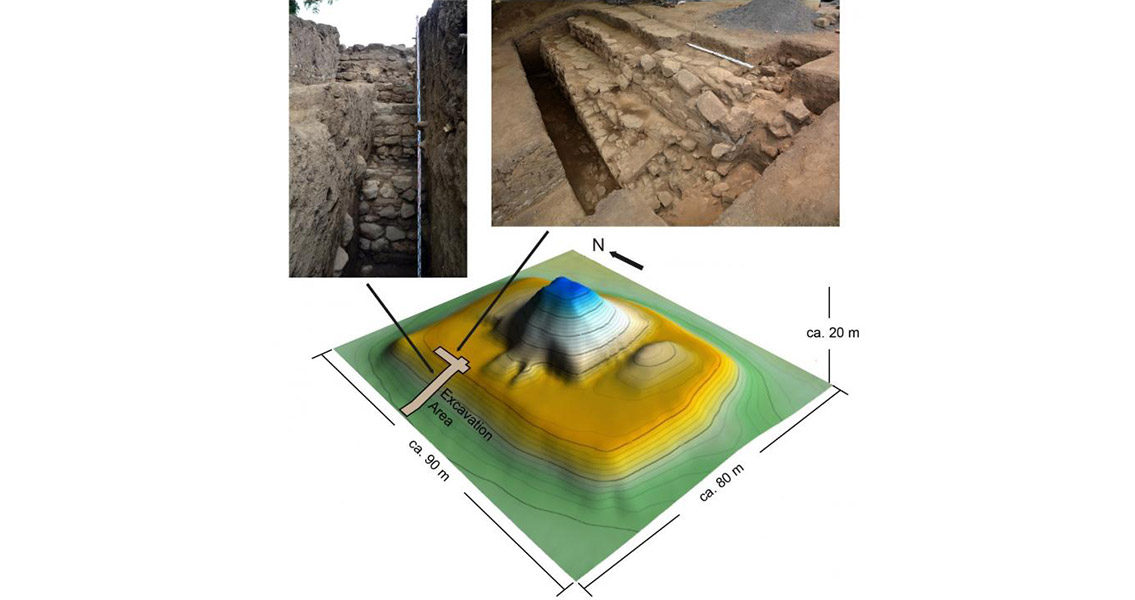<![CDATA[An international research team led by Assoc. Professor Akira Ichikawa with the Institute for Advanced Research at Nagoya University have discovered a monumental platform (measuring 70 meters by 60 meters with four tiers) constructed using a variety of stones, at San Andrés, an archaeological site in El Salvador, shedding new light on the socio-cultural development of the Maya people who lived there. When the volcanic caldera, Ilopango, erupted between 400 CE and 500 CE, it devastated a number of Maya cities and covered an area of 10,000 square kilometers (at a minimum) in a blanket of ash a waist deep. The platform discovered at San Andrés was built directly above this layer of ash, suggesting the people were able to start the recovery process much sooner than previously thought, and they did it with the help of a neighboring community. The masonry architecture of the platform is very similar to the method of building associated with people from the Quelepa area (another archaeological site in eastern El Salvador), although the Maya in this region used earthen material for construction during this time period. The introduction of a new construction technology indicates that this neighboring group likely came to the city’s aid following the eruption. Human occupation at San Andrés started around 900 BCE, and between 600 CE and 900 CE it served as the provincial capital over smaller Maya settlements. Archaeological evidence establishing trade with Copan and other Maya groups has been found, however this new connection with the people of Quelepa reveals an interaction between different cultures. Following the Spanish Conquest, the San Andrés ruins became part of a colonial estate. The site was again affected by volcanic activity when it was buried by the Playón volcano eruption in 1658 CE. Quelepa was settled in approximately 400 BCE. by the Lenca people – Quelepa means ‘stone jaguar’ in the Lenca language. – and unlike other, less fortunate sites, was not severely impacted when Ilocano erupted. The Maya civilization thrived for more than three millennia, beginning in 2000 BCE and lasting until the Spanish arrived during the sixteenth century. Considered an advanced society with art, astronomy, and mathematical systems as well as a written language (the only known written language in the pre-Columbian Americas), they also had unique architectural customs. The Yucatán Peninsula in Mexico is synonymous with Maya ruins, but in actuality the Maya Empire encompassed southeastern Mexico, all of Belize and Guatemala, as well as the western portions of El Salvador and Honduras, and there are hundreds of sites across all five of these countries. A wide variety of structures were built by the Maya, putting the civilization amongst the greatest of the pre-industrial world. They built their cities using Neolithic technology and in the southeastern Maya region, especially in what is now western El Salvador, monumental architecture was primarily constructed using earthen material within the time period in question. Excavations at the site have uncovered a large-scale complex of governmental buildings, religious structures, palaces, and pyramids. Image courtesy of Akira Ichikawa and Juan Manuel Guerra ]]>
Neighbors Helped Maya with Disaster Recovery
